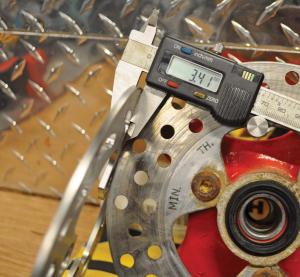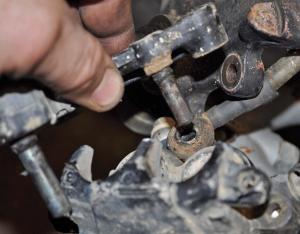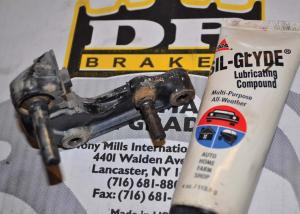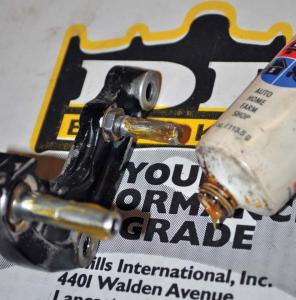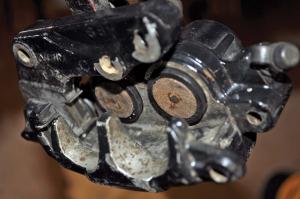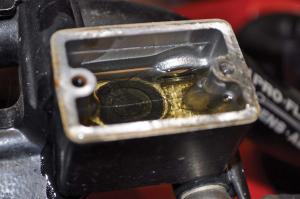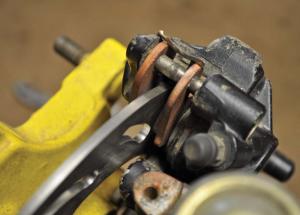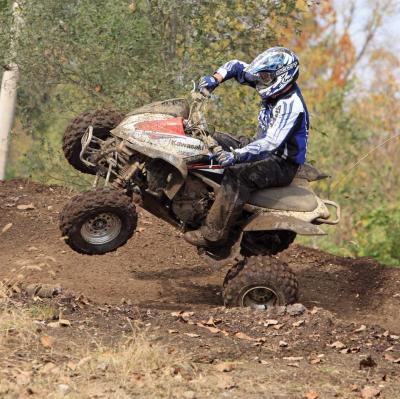 Brakes are quite possibly the most overlooked system on an ATV or SXS. We take them for granted because they usually work when we squeeze the lever or step on the pedal. But over time, our brakes will lose their feel and performance. Since it happens slowly, we often don’t realize how bad they’re getting. Routine maintenance is very important to proper brake function, and unfortunately, throwing on a new set of pads won’t necessarily restore all of the lost performance. Read on, and we’ll tell you how to make sure you’ll have top performance out of your braking system.
Brakes are quite possibly the most overlooked system on an ATV or SXS. We take them for granted because they usually work when we squeeze the lever or step on the pedal. But over time, our brakes will lose their feel and performance. Since it happens slowly, we often don’t realize how bad they’re getting. Routine maintenance is very important to proper brake function, and unfortunately, throwing on a new set of pads won’t necessarily restore all of the lost performance. Read on, and we’ll tell you how to make sure you’ll have top performance out of your braking system.
WEAR SURFACES
It’s easy to think that your brake pads are the most important factor in producing the friction that slows and stops your vehicle. But the fact is that they’re only half of the equation when it comes to the friction surface. The brake rotors are equally as important, if not more so, than the brake pads. They will wear out just like your brake pads, just usually not quite as fast. As they become thinner, they lose their ability to dissipate heat and create the friction necessary for effective braking. Also, it’s tough to see except in extreme situations, but they do not always wear perfectly evenly. In most cases, your brake pads will create a concave wear pattern. Putting new brake pads on a rotor that isn’t flat will result in weak braking every single time. It’ll also create a bad wear pattern on your brand new pads and decrease their lifespan. 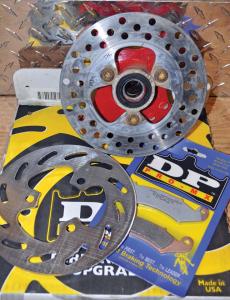
Replacing your rotors with a new set is your only option, as there is no realistic way to properly resurface them. Even if you could, by the time they were machined to a proper surface, they’d be well under the discard specification. We outfitted our classic Honda 250R with a new set of rotors from DP Brakes. Our DP rotors were slightly thicker than stock, and had more effective cooling slots than our stock rotors to keep our braking system cool and powerful.
PISTON OPERATION
Over time, crud and corrosion can build up between the brake caliper and the pistons. There are rubber boots to keep this to a minimum, but let’s face it… we’re driving dirt toys here. The caliper pistons need to be able to float freely in order to transfer hydraulic pressure to the brake pad when the brakes are applied and to back off slightly when the brake is released so there isn’t excessive drag. A slightly stuck piston will often free up when pushed out (applying brakes slightly with the caliper/pads removed) and pushed back in with a pliers or C-clamp. A little bit of silicone lubricant will usually help to free things up. Make sure your brake pistons fully retract into the caliper with a modest amount of pressure. If they don’t, repair or replacement of the caliper may be your only option.
CALIPER GUIDE PINS
In most ATV and SXS applications, a floating caliper is used to compensate for brake wear and any movement in the brake rotor. Your caliper rides on guide pins that have to be clean and lubricated to facilitate that movement as well as to compensate for wear. Just like with the brake pistons, dirt and corrosion will accumulate and keep the caliper slides from moving freely. Remove the caliper pins, clean them thoroughly and apply high quality brake lubricant. Also, make sure the rubber boots are in good shape to keep future crud out of the pins.
FLUID
Brake fluid is probably the most overlooked component of a braking system. Brake fluid has many purposes in a braking system. It has to transmit force from the master cylinder piston to the caliper pistons as well as lubricate the internal components, and even help to transfer heat away from your brake caliper pistons. Over time your fluid will become contaminated with wear particles from the braking system, water, and dirt. At this point, it can’t effectively do any of the jobs mentioned and your braking performance suffers. Flushing your old brake fluid out of the system and replacing it with fresh fluid will make a HUGE difference in the feel and performance of your brakes. A little hint: brake fluid is hygroscopic, meaning it will draw moisture from the atmosphere and become fouled with water which can drastically decrease brake fluid longevity and performance. Keep your master cylinder reservoir as well as your brake fluid containers closed at all times that you aren’t filling your reservoir!
These four areas are often the difference between a backyard fix and a professional brake job. They can usually be done for a reasonable price or simply a little bit of extra time. With some extra attention to detail, you can have your off-road vehicle stopping like new again -maybe even better.
DP BRAKES


